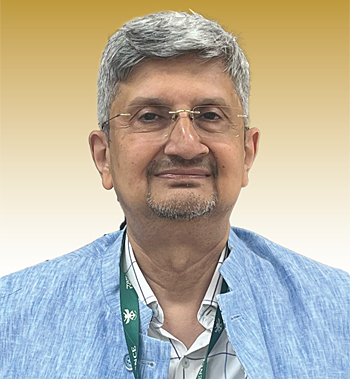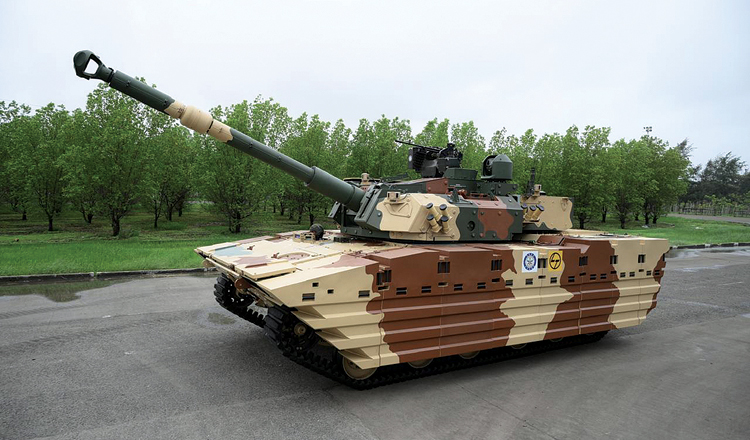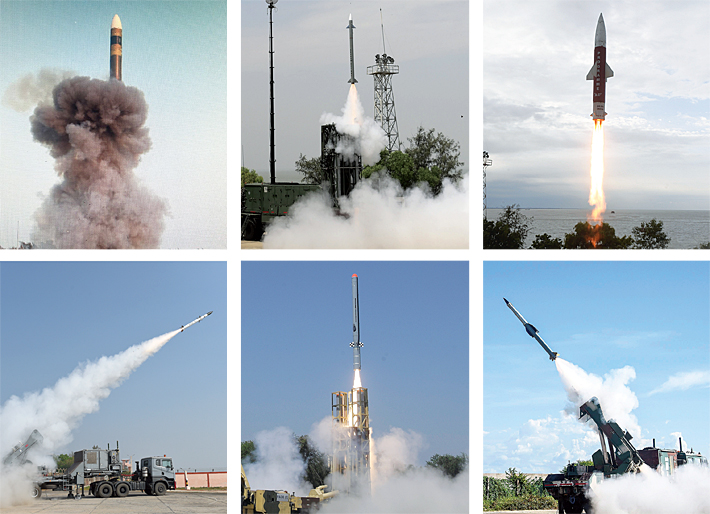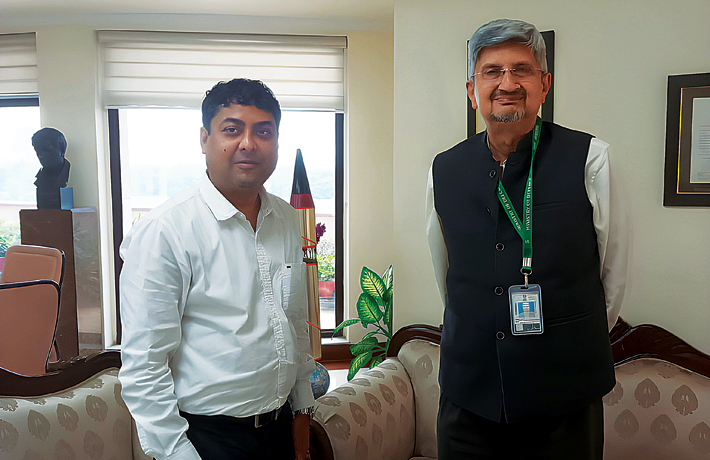INDIAN ARMED FORCES CHIEFS ON OUR RELENTLESS AND FOCUSED PUBLISHING EFFORTS

The insightful articles, inspiring narrations and analytical perspectives presented by the Editorial Team, establish an alluring connect with the reader. My compliments and best wishes to SP Guide Publications.

"Over the past 60 years, the growth of SP Guide Publications has mirrored the rising stature of Indian Navy. Its well-researched and informative magazines on Defence and Aerospace sector have served to shape an educated opinion of our military personnel, policy makers and the public alike. I wish SP's Publication team continued success, fair winds and following seas in all future endeavour!"

Since, its inception in 1964, SP Guide Publications has consistently demonstrated commitment to high-quality journalism in the aerospace and defence sectors, earning a well-deserved reputation as Asia's largest media house in this domain. I wish SP Guide Publications continued success in its pursuit of excellence.
- All about HAMMER Smart Precision Guided Weapon in India — “BEL-Safran Collaboration”
- US to sell $93 million precision artillery, Javelin and Excalibur projectiles to India
- US to sell $93 million precision artillery, Javelin and Excalibur projectiles to India
- India, Germany deepen defence ties as High Defence Committee charts ambitious plan
- True strategic autonomy will come only when our code is as indigenous as our hardware: Rajnath Singh
- India-Israel Joint Working Group Meeting on defence cooperation to boost technology sharing and co-development
- G20 Summit: A Sign of Global Fracture
“DRDO is actively working on upgrading India’s radar systems, including the development of advanced radars”
With several advanced technologies and weapon platforms in the pipeline, DRDO continues to embody the spirit of innovation and R&D in defence. In an Exclusive interaction, Samir V. Kamat, Secretary DDR&D and Chairman DRDO, speaks with Manish Kumar Jha on the full and comprehensive range of military technology development, some of them futuristic and groundbreaking for India.

Manish Kumar Jha (Manish Jha): The DRDO recently broke new ground by conducting test of a scramjet engine, which will enable critical hypersonic weapon technology for India. How complex and indigenous is the scramjet engine development, and how will it be a game changer for DRDO’s next generation missile advancement
Samir V. Kamat (Kamat): Hypersonic Cruise Missile is a class of weapons that can travel more than 5 times the speed of sound (> 6100 Kmph) for long duration and is powered by scramjet i.e., Air breathing engine. Air breathing propulsion systems, having supersonic combustion, plays a critical role for long-duration cruise conditions.
DRDO achieved a significant milestone in the field of Hypersonic Weapon Technology, when it conducted long-duration Active Cooled Scramjet Subscale Combustor ground testing. The development of this scramjet engine is fully indigenous. It will be a game changer as the hypersonic missiles are very difficult to track and intercept. It gives you an assured retaliation capability, even if the other country has good air defence. The missile is difficult to detect and even if detected, it is difficult to intercept them.
We are working on two types of hypersonic missiles, hypersonic glide missile and hypersonic cruise missile. We have finished one development trial of Hypersonic glide missiles and in next 2-3 years we should be able to complete its development and will offer it to the Users.
For development of Hypersonic Cruise missiles, which is based on scramjet, we are currently proving the scramjet on the ground, and then we have to prove it in flight. Then there are other challenges in respect to the cruise missiles, and, I hope that in next five years it will get converted into weapon system. Hypersonic missiles are being flown by select few countries in the world, but they are not the hypersonic cruise missile. They are flying hypersonic glide missiles only.
Manish Jha: What is next after Akash, especially when it worked and proved, showing the efficacy, testing and credibility in real real-time situation?
Kamat: Our indigenously developed Akash missile system demonstrated its capabilities effectively in the recent conflict. Currently User trials of Akash NG are going on, that would be the next generation, Akash.

India became first country to demonstrate the capability of engagement of 04 aerial targets simultaneously at 25 km ranges by command guidance using single firing unit by Akash Weapon System. We are also working on Akash with longer range capability. Then there is Quick Reaction Surface-to-Air Missile (QRSAM), which is going to be inducted soon.
Manish Jha: What are the features that lead to the new fighter jets being harder to detect by the enemy radars, and does the DRDO plan on upgrading the Indian radar system to detect such jets that would perhaps be used by foreign military forces?
Kamat: Stealth fighter jets are designed to minimise radar detection through a combination of features including radar-absorbent materials, specialised shaping, and electronic warfare capabilities. The DRDO is actively working on upgrading India’s radar systems, including the development of advanced radars. Designed for air superiority, ground strikes, suppression of enemy air defences, and electronic warfare, the AMCA features advanced systems tailored for modern combat. Its stealth profile incorporates a low radar cross-section, achieved through radarabsorbent materials and internal weapons bays, enabling it to evade enemy detection.
“India entered into a new quantum era of secure communication which will be a game changer in future warfare.”
In the field of Radar, we are self-sufficient now. Our radars are of world class. We have airborne radars, ship-based radars, cloud-based radars. We are having long range radars meant for tracking ballistic missiles as well as space situational awareness. We have short range battlefield radar as well as land-based radars for surveillance capability. Today we are having the capability to develop any type of radar. DRDO is actively working on upgrading India’s radar systems, including the development of advanced radars.
Manish Jha: What about DRDO’s AESA Radar development progress?
Kamat: AESA radar is now ready for our airborne platforms. DRDO’s LRDE has designed and developed Uttam AESA Radar for LCA (Tejas) aircraft of the Indian Air Force (IAF). Production clearance was obtained after completion of developmental flight trials. Licensing Agreement for Transfer of Technology (LAToT) was signed between DRDO and HAL, Hyderabad for Limited Series Production of Uttam Radar for LCA Mk-1A. The combined flight trials with Indigenous EW Suite of DRDO is in progress on Tejas. Production Order on Industry Partner is awaited, so as to make Radar available for the 41st Aircraft onwards being produced by HAL for IAF.

Manish Jha: How close is DRDO to operationalising quantum tech against advanced submarine threats, and is this a near-term or decade-long capability?
Kamat: There is quantum computing, quantum sensing and Quantum Communications. Detection of submarines is quantum sensing, where you have quantum interference, where very small changes in the magnetic field is detected.
So, when a submarine passes, because it is made up of steel, it has some magnetic effect i.e., it disturbs the earth magnetic field. So, the small changes in the earth magnetic field can be detected by this magnetic sensor, which can be flying on a UAV or an aircraft. That way you can detect submarines up to a depth of 100-200 meters. It is a very useful technology.
We are working on various types of magnetometers, which can detect picotesla (pT) level changes in the magnetic field. With that we hope that we will be able to detect submarines in the ocean. It is not very futuristic; we hope that we should have this indigenous capability in next 2-3 years.
“Then there is Quick Reaction Surface to Air Missile (QRSAM), which is going to be inducted soon.”
Quantum Communication through optical fibres, we have demonstrated upto 100 kms. Now, recently we have done free space quantum secure communication using quantum entanglement over a distance of more than one km via a free-space optical link established on the IIT Delhi campus. Free-space Quantum Key Distribution (QKD) eliminates the need to lay optical fibres, which can be both disruptive and expensive, especially in challenging terrains and dense urban environments. With this, India entered into a new quantum era of secure communication which will be a game changer in future warfare.
Manish Jha: What steps has DRDO taken in the process of developing a higher thrust class engine? And how do you look at the possible collaboration to partner with, the co-development cost and time?
Kamat: We are looking at the co-development of higher thrust class engine and this could be a national mission, where there will be GTRE, there will be the Indian industry and of course there will be a foreign OEM. We will also involve academia and other startups to work with us because this is a capability which the country needs. Lot of discussions has happened but final decision in this regard will be taken by our government. This is one area where we have to become Atmanirbhar.

The GTRE has developed Kaveri dry engine, which will go into our unmanned platforms. For a manned platform, we need higher thrust weight class engine, which we hope to do. The Kaveri engine final high-altitude trials as well as flying test bed trials are underway and once that is done, we are ready to integrate it with our Unmanned Platforms.
Manish Jha: Beyond the concept of ‘Make in India’, how has the DRDO worked to ensure core intellectual property ownership in nextgen systems like AMCA and hypersonic to further prevent tech dependencies?
Kamat: DRDO is actively involved in designing and developing critical technologies for advanced systems like the AMCA (Advanced Medium Combat Aircraft) and hypersonic missiles. This includes focusing on key areas like stealth technology, AI-assisted electronic piloting and advanced avionics. DRDO’s work on hypersonic technology, including the successful ground testing of a scramjet engine, demonstrates India’s progress in this cutting-edge field.
We are generating our own intellectual property. We are doing the design and development on our own. The IP belongs to us. Even when we do co-development of an engine, one of the conditions is that entire IP should belong to India. DRDO is working to ensure core intellectual property (IP) ownership in next-gen systems like the AMCA and hypersonic by prioritising indigenous design and development, fostering collaboration with private players, and leveraging transfer of technology (ToT) agreements strategically.

This approach aims to reduce reliance on foreign technology and build a selfreliant defence industrial base. DRDO is increasingly engaging with private sector companies and MSMEs in defence R&D and manufacturing. This collaboration is crucial for scaling up production, accelerating technology transfer, and building a robust domestic defence ecosystem.
The ‘Make in India’ initiative is a key driver in this process, encouraging private companies to invest in defence production and contribute to self-reliance. The ToT process is carefully managed to ensure that India retains control over the core IP and can adapt the technology to its specific needs. DRDO also releases updated compendiums like “DRDO Products for Export,” showcasing India’s defence capabilities to friendly nations and potentially paving the way for further collaborations and ToT opportunities.
Manish Jha: DRDO has developed crucial AIP technology in the shortest time. How would you talk about the DRDO AIP systems induction timeline for the P-75 submarine?
Kamat: DRDO developed AIP is going into the P-75. Our energy module is getting ready hopefully by December this year and then module will be put in a submarine hull, that may take a year or so. After that when the submarine come for refit, this hull containing the AIP i.e., energy module will be joint to the submarine and then it will go through the testing.
The land-based prototype of this AIP was proven on the ground last year.
Manish Jha: What measures can be taken to ensure the security of the Indian coastline?
Kamat: For Coastline security, you can have variety of defence systems like Radars, Electro Optic systems etc to detect any threats coming in. Then you can have a coastal battery of guns, missiles like surface-to-surface, surface-to-air etc. An entire network can be built if required. It need not be ship based only, it may also be ground based or shore based. BrahMos is also a good weapon, it can be fired from the shore. Then Guided Pinaka is also very accurate, which can be used against ships which are coming close to our coast.





